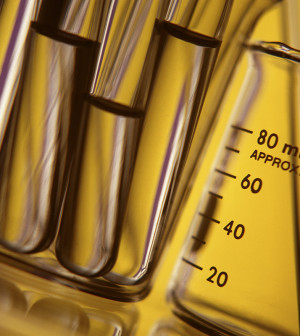- Understanding the Connection Between Anxiety and Depression
- How Daily Prunes Can Influence Cholesterol and Inflammation
- When to Take B12 for Better Absorption and Energy
- Epsom Salts: Health Benefits and Uses
- See What Saffron Can Do for Sleep and Heart Health
- 6 Common Mistakes to Avoid Before Your Physical
- Can Sweating Really Help You Beat a Cold?
- Strengthening Your Relationship: Practical Strategies
- Skip Storing This Everyday Product in the Fridge Door
- Green Tea + B3 Pairing May Boost Brain Health
FDA Approves New Magnet Device to Treat Migraines


The U.S. Food and Drug Administration has approved the first device aimed at easing the pain of migraines preceded by aura — sensory disturbances that occur just before an attack.
About a third of migraine sufferers experience auras.
The Cerena Transcranial Magnetic Stimulator would be obtained through prescription, the FDA said in a statement released Friday. Patients use both hands to hold the device against the back of their head and press a button so that the device can release a pulse of magnetic energy. This pulse stimulates the brain’s occipital cortex, which may stop or ease migraine pain.
“Millions of people suffer from migraines, and this new device represents a new treatment option for some patients,” Christy Foreman, director of the Office of Device Evaluation in the FDA’s Center for Devices and Radiological Health, said in the statement.
The agency’s approval is based on a trial involving 201 patients who had suffered moderate-to-strong migraine with aura. One-hundred and thirteen of the patients tried treating their migraines while an attack was in progress, and it was the testimony of this group that led to the approval of the new device, the FDA said.
More than a third (38 percent) of people using the stimulator said they were pain-free two hours later, compared to 17 percent of patients who did not use the device. A full day after the onset of migraine, nearly 34 percent of device users said they were pain-free, compared to 10 percent of people who hadn’t used the device.
Side effects from the device were rare, the FDA said, but included “single reports of sinusitis, aphasia (inability to speak or understand language) and vertigo.”
The new device is approved only for use by those aged 18 or older, and should not be used by people with suspected or diagnosed epilepsy or a family history of seizures. It should also not be used by anyone with any metal device implanted in the head, neck or upper body, or people with “an active implanted medical device such as a pacemaker or deep brain stimulator,” the FDA said.
The stimulator, manufactured by eNeura Therapeutics of Sunnyvale, Calif., is not meant to be used more than once every 24 hours, the FDA added. It has also not been tested to see if it is effective against other symptoms of migraine such as nausea or sensitivities to light or sound.
More information
Find out more about migraine with aura at the American Headache Society.
Source: HealthDay
Copyright © 2026 HealthDay. All rights reserved.










